Planting fresh tomato seeds is possible, and it just might be your next gardening adventure. Tomatoes are extremely popular fruits (yes, they’re technically fruits, although they are used as vegetables) for home gardeners. But you might ask: can I plant fresh tomato seeds?
You can plant fresh tomato seeds using a few different methods, with varying germination rates. Different factors–such as the type of tomatoes used and how the fresh seeds are treated–will determine the seed germination rate and whether the plant will produce any tomatoes.
You’re using the tomato anyway–why not put some seeds in the ground and see what comes up?
Tomato varieties for growing from seeds: self-pollination
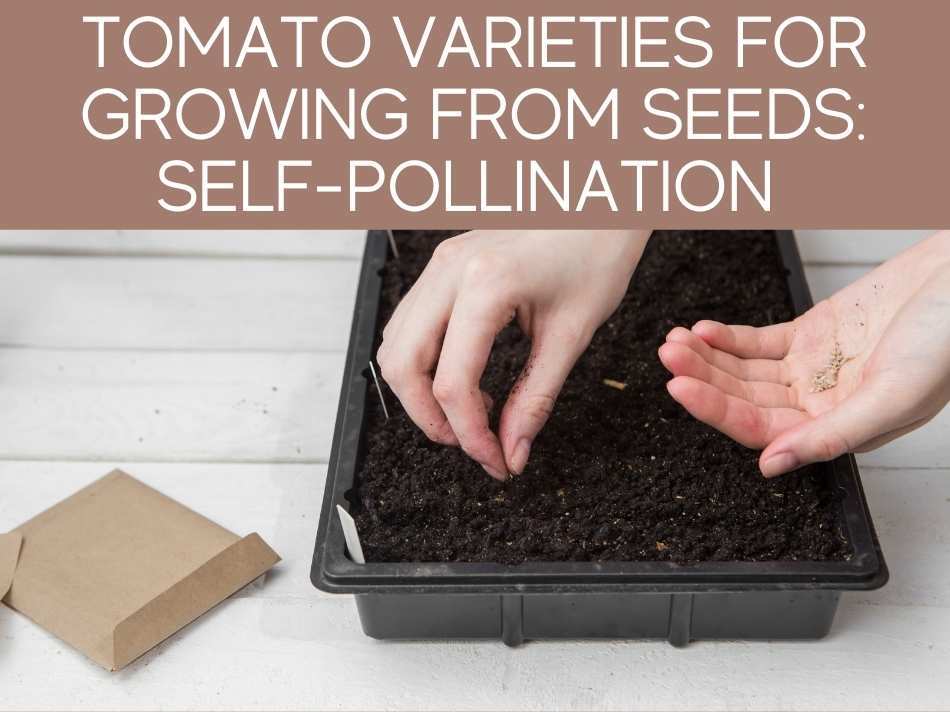
Tomatoes are a great candidate for growing from fresh seeds because they are self-pollinating, meaning that tomato flowers contain both the male and female parts required for reproduction.
Other plants, however, have a separate male and female flower, and those male and female parts need to come together in some way in order to produce fruit.
Gardening has many perks.
One of those perks is that it is an excellent introduction to reproductive education.
Last summer, my four-year-old learned how to identify male and female zucchini flowers and how to pollinate them correctly.
Later, when he asked why the eggs in our refrigerator didn’t have any chicks inside, I had a perfect starting point for his understanding.
Anyway, I digress.
The types of plants that have separate male and female parts–such as squash, pumpkins, and corn–might be handy for sex education, but they are not a great choice for planting fresh seeds.
This is because these plants might easily become cross-pollinated in different ways.
Via insects or other avenues, the male and female parts might get mixed up between different plant varieties.
For this reason, the seeds from cross-pollinated plants aren’t “pure,” and the results of these seeds will be unpredictable.
While cross-pollinated plants might produce normal fruit, the seeds gathered from cross-pollinated plants may produce a second generation that is inferior in some way to the original.
So all that to say, self-pollinating plants such as tomatoes are a good choice for experimenting with planting fresh seeds.
So–yes–you can grow tomatoes from fresh tomato seeds!
Can you grow tomatoes from fresh seeds?
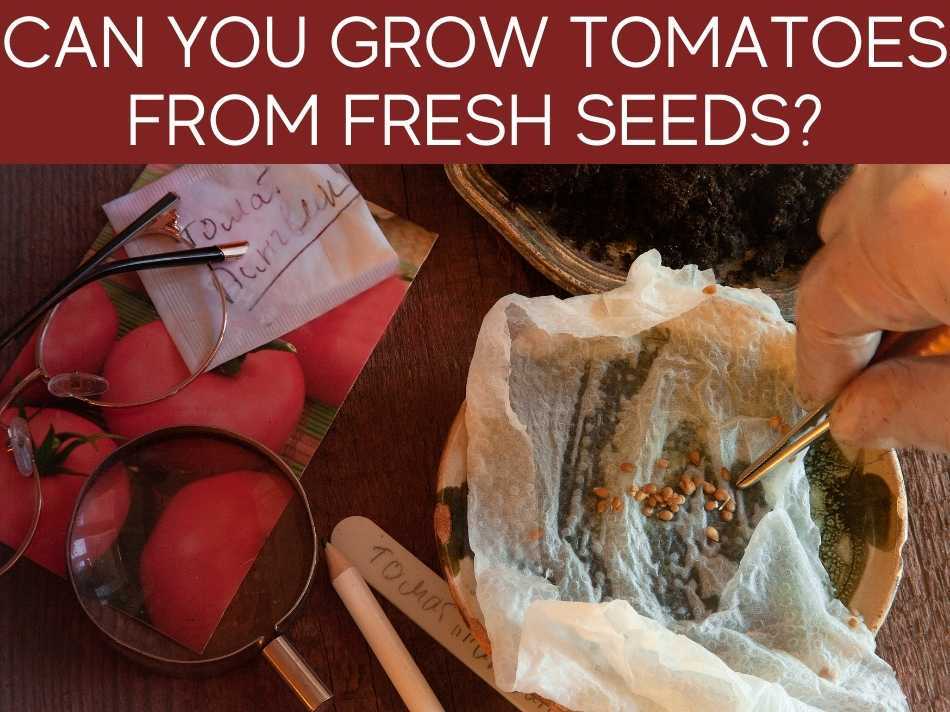
Yes, you can grow tomatoes from fresh seeds.
You can use pretty much any type of tomato you want–from pulpy Romas to hefty beefsteaks to marble-sized cherry tomatoes.
You can plant any tomato seeds you want, and see what grows just for fun, but if you want to plant something you can later eat, you need to plant seeds from a tomato that is an open-pollinated variety.
SInce you’ll be growing tomatoes, you’ll probably also be curious to know how many tomatoes 1 plant can produce.
Open-pollinated vs. hybrid vs. heirloom seeds
Seeds from an open-pollinated tomato plant, unlike a hybrid variety, will produce fruit that is similar to the parent plant.
You can pretty much count on getting the same type of tomato that you started with.
Some open-pollinated varieties are heirlooms.
This means that gardeners have passed these seeds down from generation to generation.
That’s how reliable they are.
There’s something about heirlooms that’s a bit romantic.
Just knowing that the seeds were passed down, generation by generation, gives you a bond to gardeners past.
Heirloom tomato varieties
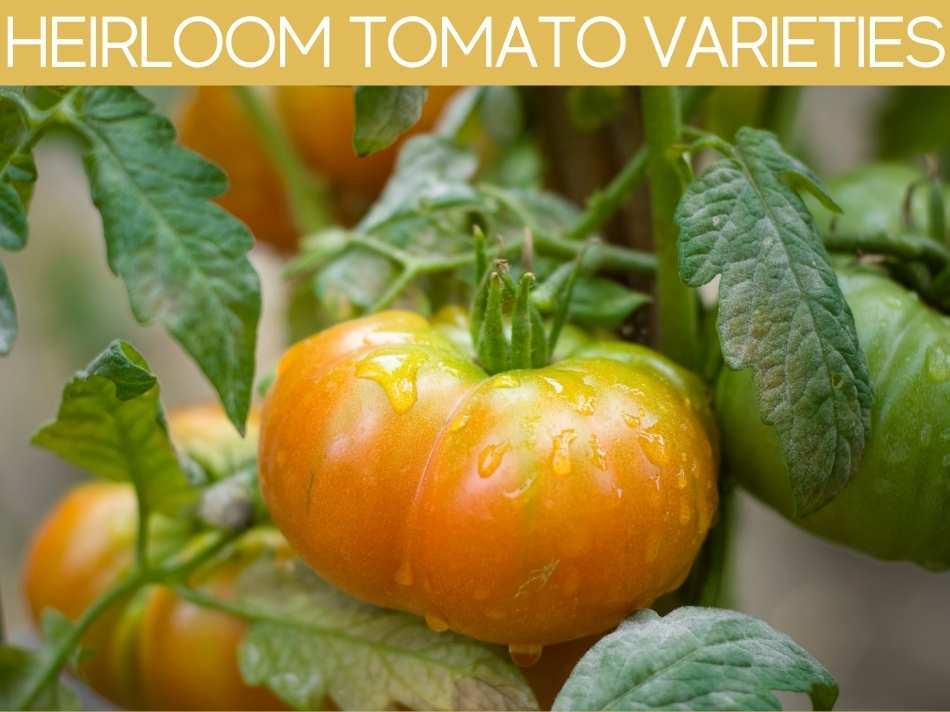
Heirloom varieties can be very interesting; they are available in different shades, flavors and sizes than what might be available from more mainstream varieties in the grocery store.
Some popular heirloom varieties include:
- Amish Paste,
- Black Russian,
- Bonny Best,
- Brandywine, and
- Tumbling Tom Red.
There’s even a:
- Chocolate Stripes and
- Hillbilly variety.
(Am I the only one who gets such a kick out of the names given to plant varieties? They’re just fun.)
However, not all open-pollinated varieties are heirlooms.
Some are more recent, so they don’t have that distinguished history of an heirloom, but they will still have the ability to produce close replicas of themselves.
Hybrid tomatoes and using seeds from hybrid tomatoes
What you want to stay away from, especially if you’re wanting to grow tomatoes (not just tomato plants), is a hybrid variety.
Hybrid varieties are just what they sound like–the characteristics of two different types of plants have been mixed together, usually to maximize the benefits of each.
For this reason, hybrids can be powerhouses.
They have been altered and cultivated according to different desired outcomes; you can choose hybrids known for color, taste, size or nutritional value.
Many hybrids have been cultivated for disease resistance or ability to thrive in a specific climate.
There are a lot of benefits to hybrid varieties, but a major disadvantage is that the seeds cannot be saved from year to year.
This is because the seeds taken from a hybrid tomato will not be reliable.
It’s like reshuffling the deck.
The characteristics of those two starting plants–the original hybrid couple–will be mixed up again, and come out in a completely different way.
Because of this, hybrid varieties are unpredictable.
They’re not the best choice for wanting to grow tomatoes from fresh seeds.
Selecting tomatoes for growing seeds
When you select your tomato to use for seeds, of course remember to consider:
Your growing space
These tiny seeds have the potential to grow into large, sun-loving plants.
If you only have a windowsill or balcony to work with, consider bush varieties that are designed for life in a container.
A bush variety simply means that the plant will grow to a certain height, stop, and then produce fruit (unlike the alternative–vining tomato plants).
Bush variety tomatoes are technically called determinate–since they grow to a pre-determined size.
There are some adorable varieties of plum or cherry tomatoes that will produce an impressive harvest in a small amount of space!
Your preferences
You’re eating this tomato that you’re looking to use seeds from, so likely it’s a kind of tomato that you like and use.
But still, something to consider.
If you:
- Love canning your own tomato sauce every year? Maybe Romas will be the best choice for you.
- Like big slices of tomato, to eat with a pinch of salt or on a juicy burger? A beefsteak variety will be a good choice.
- Love salads and snacking on tomatoes? Cherry tomatoes are great.
There’s nothing quite like a sun-warmed cherry tomato plucked fresh from the garden–no store-bought tomato can compare to the burst of flavor!
Can you grow tomato plants from fresh seeds?
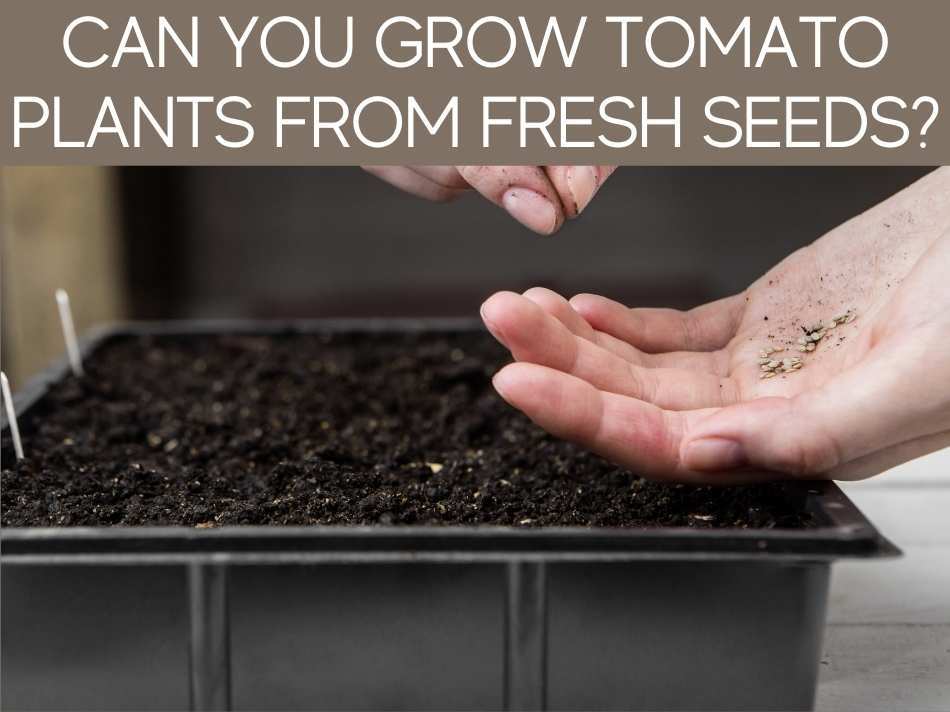
You can definitely grow tomato plants from fresh seeds.
I personally like to grow things that I can eat, but if you’re just interested in seeing something grow you can use any tomato seeds you like.
You’ll also want to check out our tips & tricks for how to grow more tomatoes.
As I mentioned before, a key thing to consider when growing tomatoes from fresh seeds is whether or not the parent plant is a hybrid or open-pollinated variety.
A hybrid plant is created when the characteristics of two different varieties are combined to maximize the benefits of both.
The fruit from these plants is good, but the seeds from these fruits may not yield predictable results.
It’s like reshuffling the genetic deck between the original two varieties, and you don’t know what kind of fruit you’ll get–or if you’ll get any fruit at all.
For this reason, when growing tomatoes from fresh seed it’s best to ensure that those seeds are from an open-pollinated variety.
However.
If you’re not interested in the fruit of the plant, the tomatoes themselves, you don’t have to worry about avoiding hybrid varieties.
You just want to see a plant grow, and you’re not too worried if the fruit is inferior in some way.
You won’t be devastated if no fruit comes at all.
This might be a fun experiment particularly for children, or in cases where you don’t know the exact variety of the parent plant.
I don’t understand this approach–as I said, I am pretty much dedicated to growing things I can eat–but, if this is your approach, have fun with it!
How to plant tomatoes from fresh seeds?
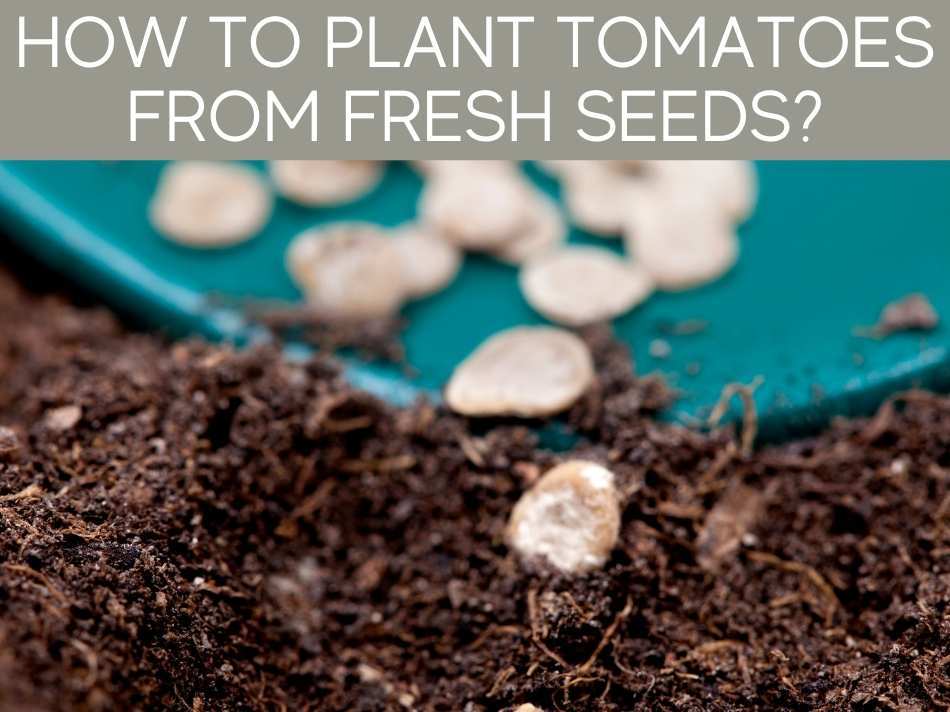
To plant tomatoes from fresh seeds, there are a few different methods but they start the same way.
Choose a container and soil
First, make sure you have a container with drainage.
There should be holes in the bottom, and pebbles or mulch as a base layer.
If you’re just starting seedlings, small pots or a seedling tray will be fine.
Second, fill the container with a good growing medium.
Potting soil is a good choice, because it has the different minerals and nutrients that baby plants need.
You should check out the complete answer for what type of soil is best for tomatoes.
If you’re going to keep your tomatoes in the container, and not transplant them, make sure that the container is large enough for the variety you are growing.
A too-small container will stunt the plant’s growth later on.
How to germinate fresh tomato seeds
As for how to go about planting the seeds, different sources make different claims.
According to many sources, you can just pop the fresh tomato seeds right out of your juicy tomato, put them in the soil, and cover them up.
When you do this, keep the seeds in their slippery gel casing.
Other sources claim that you can actually plant slices of tomato right into the soil!
Slice up your fruit into ¼ inch thick slices, put a few in your container, cover the slices in soil and see what emerges.
I have to admit, this intrigues me. It sounds fun.
However, the most reliable sources I could find on this subject suggest a slightly more complex approach.
According to the University of Minnesota, you should take seeds from ripened fruit, along with the gel they are encased in. (You know, that slippery stuff the seeds are in.)
You should put these seeds in a jar with lukewarm water and let it soak for five days.
Every day, give the jar a swirl.
The mixture will ferment and the seeds should sink.
Once the seeds have sunk–around the five-day mark–take them out of the jar, rinse them and lay them on a paper towel to dry.
Once they are dry, you can plant them or store them.
The Permaculture Research Institute gives similar instructions.
However, both of these sources are really talking about saving seeds for future use.
To use fresh seeds, from tomato to dirt in a single day, I think you can go ahead and try out the simpler instructions of simply putting fresh seeds (or even fresh slices?!) in dirt.
How do you grow tomatoes from fresh tomato seeds?
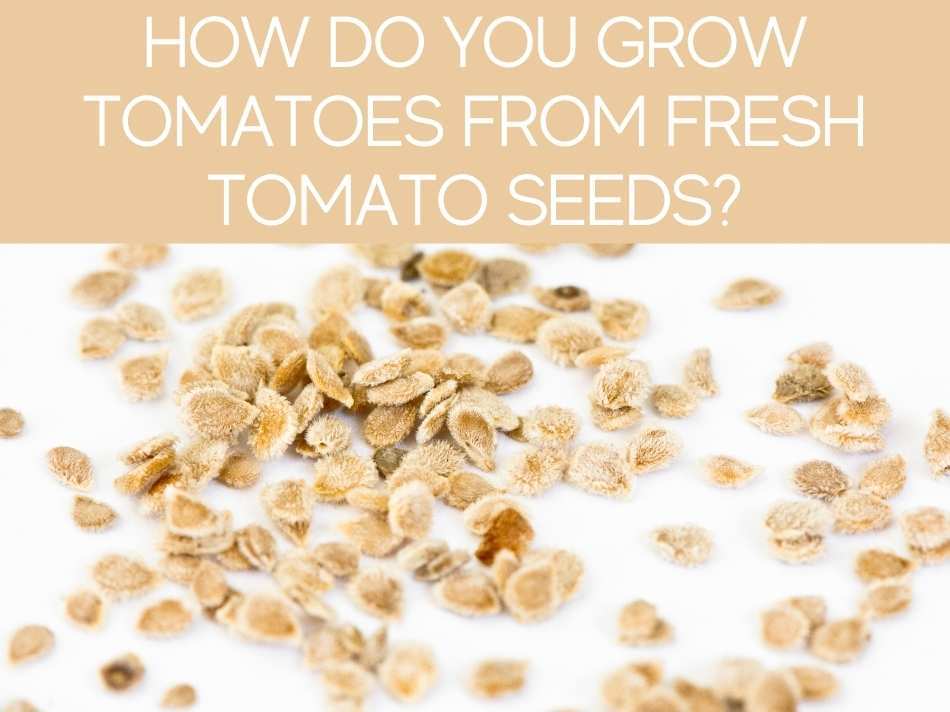
To grow tomatoes from fresh tomato seeds, first make sure that the seeds are from an open-pollinated tomato variety, rather than from a hybrid.
If your tomato variety is open-pollinated–such as an heirloom variety, for example–you know the seeds will produce predictable plants and fruit.
Next, simply put the fresh seeds–inside their gel casing–into the dirt, keep the soil moist, and watch your plants grow!
How do you grow tomatoes from seeds from fresh tomatoes?
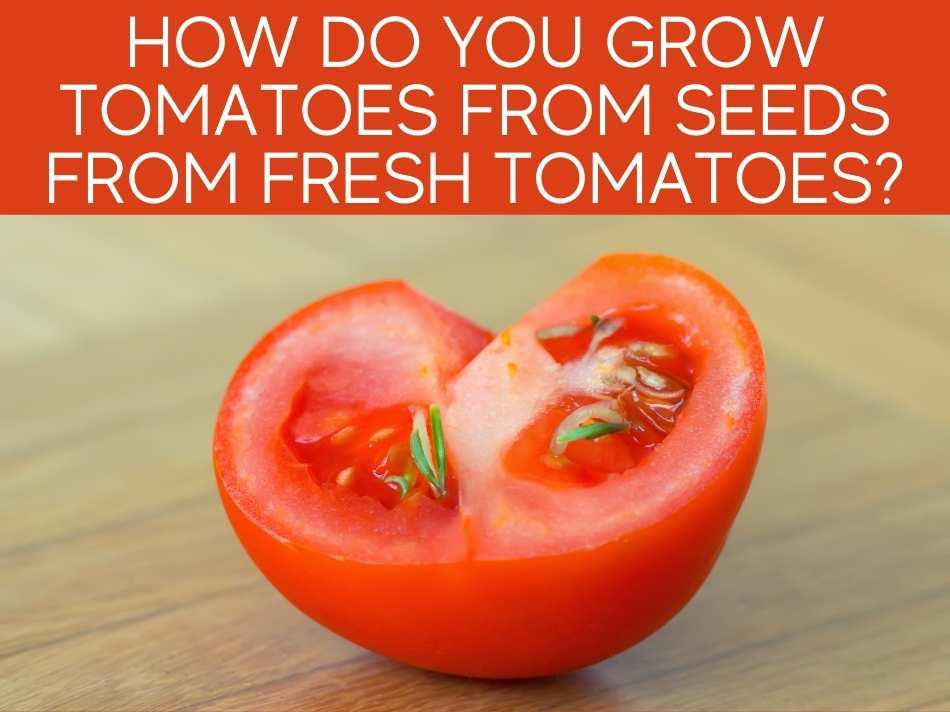
Can you grow tomatoes from fresh tomatoes?
You most certainly can!
The first thing you need to do is check what kind of tomato you’re wanting to plant seeds from.
Which tomato varieties can be used to grow from fresh tomatoes?
This tomato–the parent plant–needs to be an open-pollinated variety of tomato rather than a hybrid.
Hybrid tomato varieties are created when the characteristics of two different varieties are mixed together.
Hybrids are great, and they produce good fruit, but their seeds are unreliable.
The seeds might produce plants and fruit similar to the parent plant, or they might not.
They might produce something better, or they might produce something worse.
So make sure that the tomato you want to use is an open-pollinated variety, such as an heirloom variety.
How to prepare seeds from fresh tomatoes
How you grow tomatoes from a fresh tomato can be done in different ways, but in general, begin by removing the seeds.
As you remove the seeds, keep them in their gel casing.
Plant the seeds in soil, just as you would with any other seeds.
Another way of growing tomatoes from fresh tomatoes is to plant an entire slice of tomato!
Slice the tomato into a ¼ inch thick slices, and plant a seed-filled slice or two under a layer of soil.
Whether planting seeds or slices, be sure to keep your soil moist.
If you’re planting indoors, you might want to cover your pot or tray with something clear that will still allow light in, but keep the moisture from getting out.
Once you see your green sprouts, you can remove the covering.
Keep your tomatoes adequately watered, and thin them out when they start to look crowded.
If you’ve started your plants indoors, you will need to transplant them outdoors at some point (unless you’re wanting to keep them in a container forever, if they’re a tomato variety that can thrive in a small space).
To transplant your seedlings, you need to take the time to harden them off.
Hardening off your seedlings means that you slowly get them used to the elements.
If you don’t harden off your seedlings, they will be shocked when you plant them in the garden and they will not thrive.
How to germinate tomato seeds from fresh tomatoes?
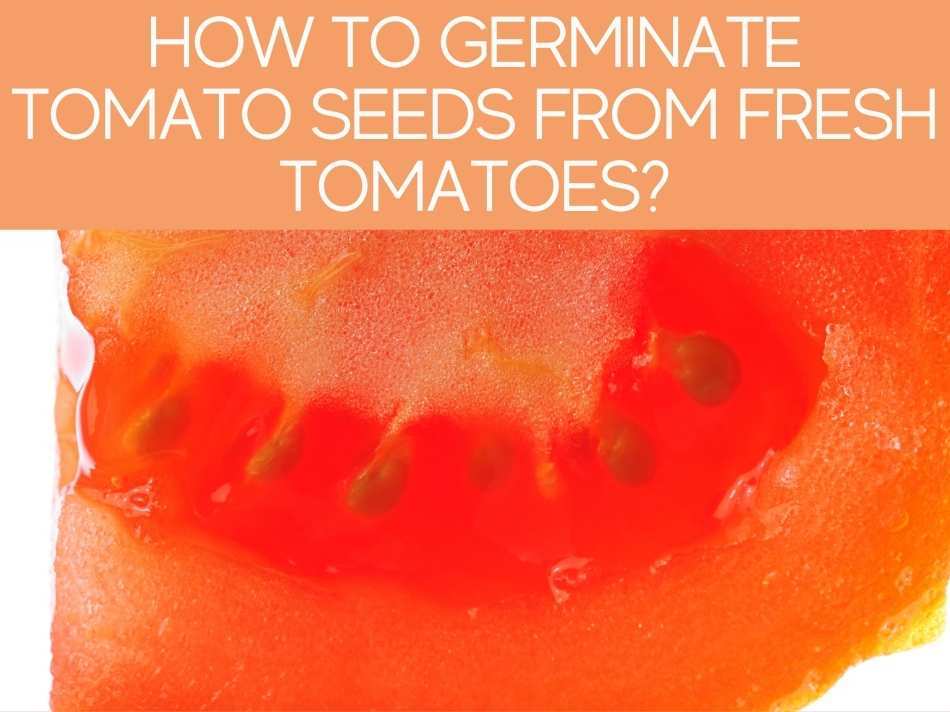
In order to germinate tomato seeds from fresh tomatoes, you follow the same basic steps that you would for germinating any seeds.
First, prepare your container.
Make sure that the container has adequate drainage.
Seedling trays or small pots should have holes in the bottom.
A large container should have holes, and you should have a layer or pebbles or mulch as a base.
Good drainage is essential to keep your plant roots healthy.
Next, fill the container with soil that has the minerals and nutrients required for starting seedlings.
You can find soil mixes at gardening centers that are especially prepared for germinating seeds or for growing plants in containers.
Make sure the soil is moist.
Put the seeds in the soil, gently covering them.
You might have plucked these seeds directly out of a fresh tomato, or you might have soaked and dried them in advance.
If you’re working with one large container, plant the seeds a few inches apart.
If you have seedling trays, plant 1-2 seeds per spot.
Cover the container or tray with a clear covering and put it in a sunny spot.
Once the seeds have germinated–you spot little green sprouts–remove the covering.
With the covering off, your soil can dry out (and it can dry out quickly, too, when it’s small amounts in a tray).
Make sure that you check your soil every day and water it when it becomes dry.
Once your sprouts start to look crowded, thin them out.
Pluck out the weaker-looking seedlings to allow the stronger seedling to grow.
In a seedling tray, you should end up with only one tomato seedling per spot.
How to grow cherry tomatoes from seeds from fresh tomatoes?
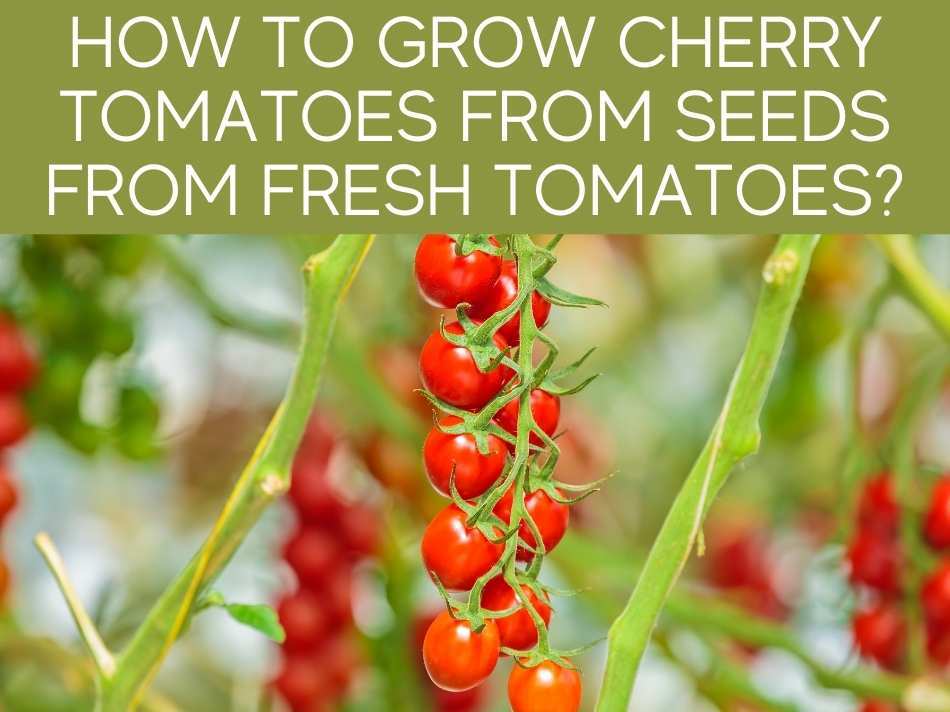
Cherry tomatoes can be grown from seeds from fresh tomatoes, just like any other tomato variety.
If you want to grow tomatoes to eat, and tomatoes that will be of the same quality of the parent plant, choose seeds from an open-pollinated variety rather than from a hybrid.
If you are growing your tomatoes in a small space, make sure that the variety is determinate.
This means that the plant will stop growing, but keep producing fruit, in a smaller space.
Some open-pollinated determinate varieties of cherry tomatoes are Maglia Rosa and Tiny Tim.
Some examples of open-pollinated indeterminate varieties (varieties that will produce predictable fruit, but will require more space) are:
- Black Cherry
- Mirabelle Blanche
- Yellow Pear, and
- Sweetie.
Growing cherry tomatoes in a pot or container
Cherry tomatoes are popular container plants.
If you’re growing in a container, and don’t want to bother with transplanting, start your seeds off in their forever home.
Just plant them right into the container that you want to use permanently.
Check your seedling packet to make sure that the container you have is large enough for the full-grown plant.
If you want to transplant them to a larger container or to your outdoor garden, start with small pots, cups or a seedling tray.
Once you’ve selected your tomato variety and have your container ready, you can plant the seeds in different ways.
The simplest way would be to take the seeds out of the tomato, keeping them in that slippery gel coating that they have.
From there, just put them directly into the soil and cover them gently with dirt.
Once your seeds are planted in moist soil, cover the container or tray with a clear covering and put it in a sunny spot.
Once you spot green sprouts shooting up, remove the covering and make sure to keep your soil moist by watering when needed.
As the seedlings grow, thin them out if they become crowded and transplant to a larger container or to your outside garden when you’re ready.
Happy planting!
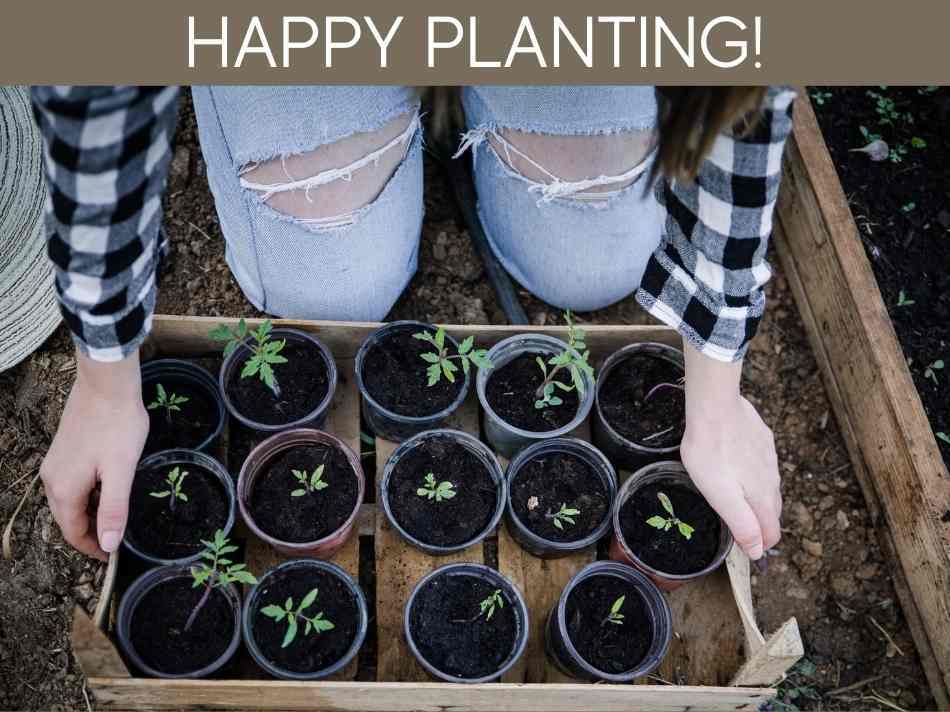
There is something satisfying about using seeds from fresh tomatoes–something so earthy, so frugal, so DIY.
It’s sure to be an interesting experiment, and you might be surprised at what you grow!
It’s also a great way to teach young gardeners the direct connections in plant reproduction.
Well, if there was ever a time to take on such an experiment, life during a pandemic certainly qualifies.
Pop a few seeds into pots on your kitchen counter and see what comes up!
